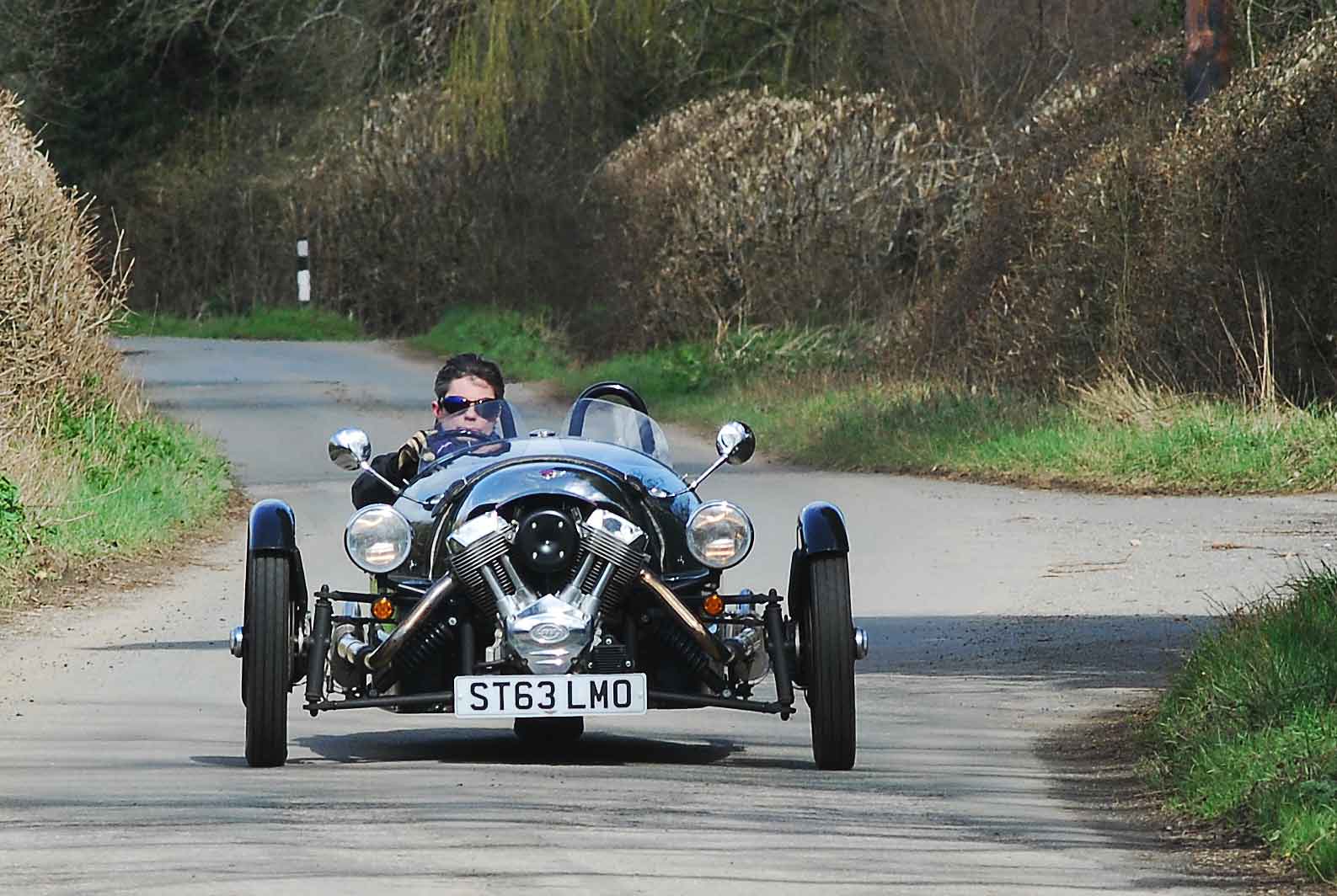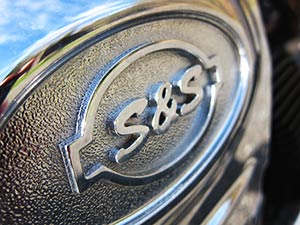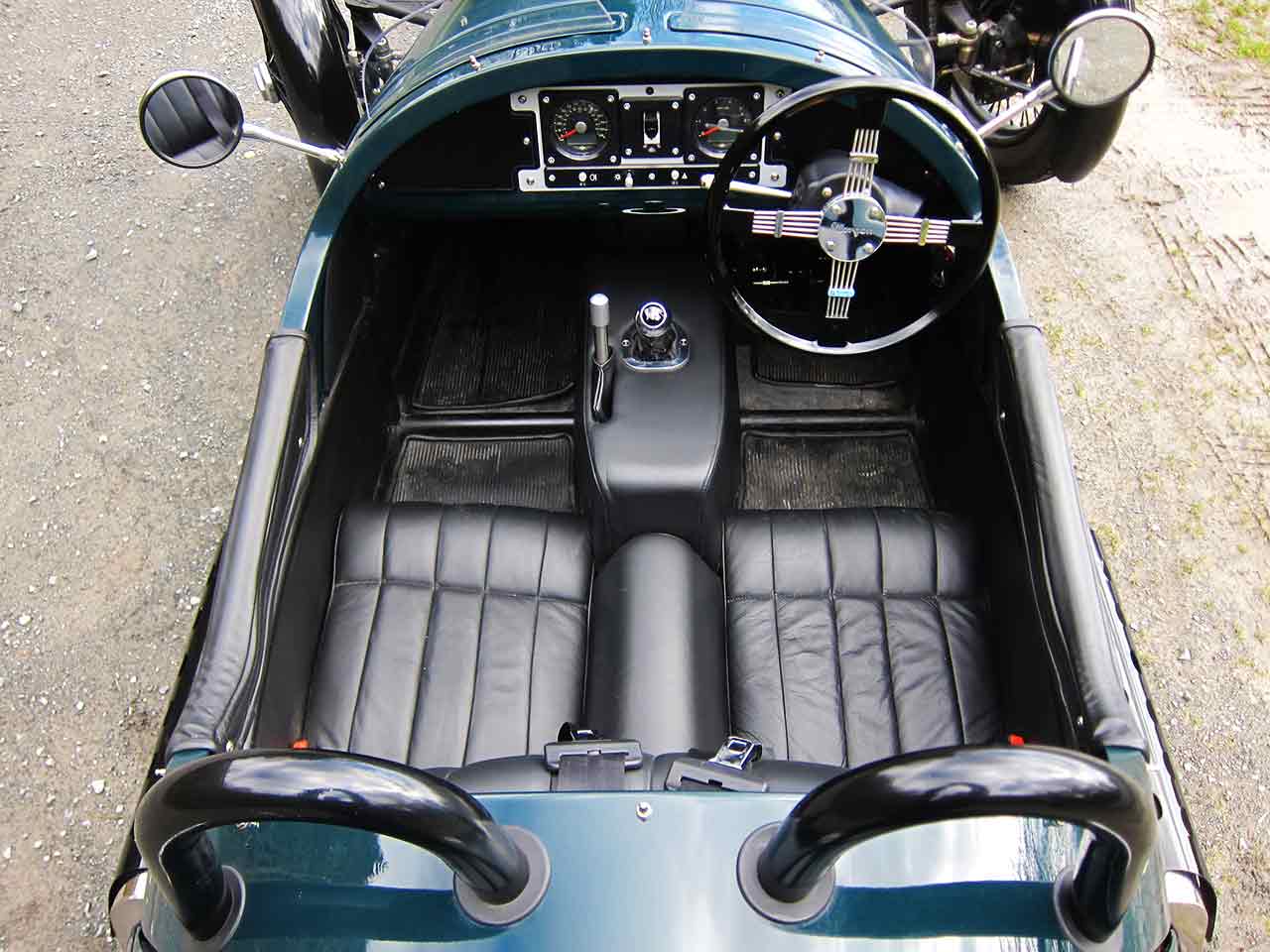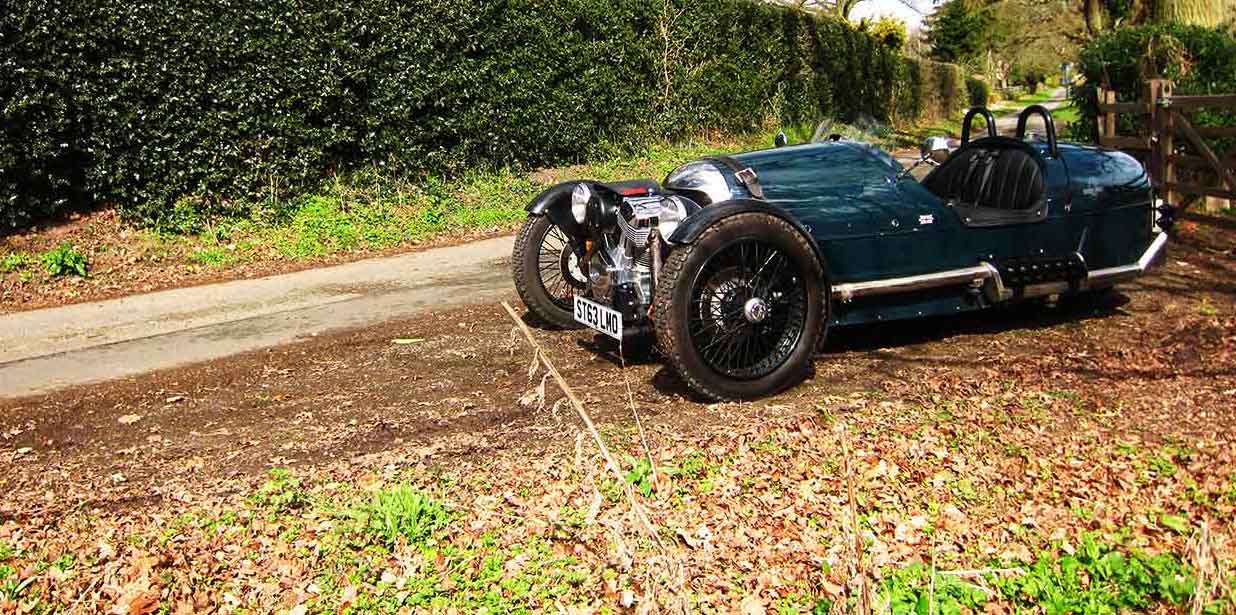There's no two ways about it: the Morgan 3 Wheeler is nuts. It harks back to a vintage era of motoring, and it does it by throwing away lots of features most would take for granted – like ABS, traction control, air bags, a roof, doors, a proper windscreen. A heater. And, of course, a fourth wheel.
The Malvern company's first cars, built in 1910, were three-wheelers, and the company continued making them right up to the 1950s. After that four-wheeled sports cars, which had been introduced in 1936, took over completely and these days there's a healthy demand for them. The current range has two strands – the 'classic' cars using traditional ladder-frame chassis and powered by Ford in-line four and V6 motors, and the Aero range which use big BMW V8 engines and state-of-the-art bonded/riveted aluminium structures.

Morgan 3 Wheeler is raw and involving like few modern cars. Pic by Paula Goddard
When the new-age three-wheeler was announced in 2011 it used a Harley-Davidson bike engine, aping the JAP and Matchless V-twins of Morgans past. For the production car Morgan adopted a V-twin from American Harley tuners S&S, and it's a monster: each cylinder sweeps nearly a litre of volume, and they sit in a 56-degree vee across the nose of the car handing out great gobs of power at low revs, in punches so discrete you can almost count them. The big twin smoothes out in its mid-range to deliver 140Nm of torque at 3250rpm and winds up to 82bhp at 5250, all channelled through a Mazda MX-5 five-speed gearbox and belt drive to the single rear wheel. The whole car weighs just 525kg dry, so that's enough power to deliver 0-60mph acceleration in around six seconds, and a top speed of 115mph.


The maximum is largely academic: achieving three figures in the Morgan may well be possible, but it would be a heroic effort. Even trundling through town at responsible speeds your senses are assailed from all sides. The exhaust pipes on either side of the body end just behind your ears, and you're deafened by every blip of the throttle even though there is a so-called silencer just below your elbow.
Unless you're very short the aero screens are little more than decorative. The wind claws at your face and hair, and rain drops smack you in the face like grapeshot. Goggles, or even a bike-style helmet, are essential. You need gloves, too – to stop your fingers freezing and to ensure you have enough purchase on the wheel.
The direct, unassisted steering is light near the straight-ahead but weights up in mid-corner. You need a firm grip, and you need to plan your cornering in advance: the sort of casual twirl of the wheel that the power assistance of modern sports car steering encourages won't work here. Instead you need to assess the corner before you get to it and make sure your hands are correctly placed so you can turn the wheel comfortably through the full arc required. It's exactly the sort of approach you need on a classic sports car.
Despite the narrow period-style wire wheels with four-inch Avons on the front, the Morgan sniffs out the apex of a corner with enthusiasm. The fat Yokohama hidden under the bodywork at the back faithfully follows unless you're too generous with the lumps of torque available from the big S&S twin, which kick the tail wide almost at will. But the direct steering makes correcting the Morgan's attitude easy, with the mudguarded front wheels visible in their response to steering inputs and road irregularities. Seeing the front wheels bump and steer is a treat few cars can offer today – Caterhams are a noble exception – and it just adds to the Morgan's magic. Most of the time you're not really conscious of the missing wheel, though you do have to learn to take account of the central rear wheel track when avoiding potholes.
So many modern performance cars have over-servoed brakes but the Morgan's unassisted pedal is ideal, giving plenty of feel and acting as a useful pivot for heel-and-toe downshifts. A hefty, short travel clutch makes smooth gear engagement tricky until you're used to it, but usefully speeds up gearchanges thereafter. The spacing between the floor-hinged pedals is ideal, though the narrowness of the footwell means there's nowhere to rest your left foot between gearchanges, and that can be irksome on a long run.

3 Wheeler cockpit is snug, luggage space minimal.

Not that the Morgan was really built for long journeys, though if you're hardy enough there's no reason why you couldn't take the 3 Wheeler on a decent road trip. The featherweight Morgan floats over most ripples in the tarmac without transmitting too many shocks to the occupants, and there's enough fuel tankage to give you a range of over 250 miles before you need to fill the rear-mounted tank through the flip-up filler behind the seats. Luggage space is minimal, though: there's room for a couple of small squashy bags in a lidded tray over the rear wheel and your passenger might find room for another small bag under their legs, but that's really about it. Morgan offers an external luggage rack as a solution.
There's no rational measure by which the Morgan 3 Wheeler makes any sense. But that's not what it's for. Instead it's a glorious antidote to the way modern cars insulate their drivers from involvement in the driving process. If you're after full-on engagement with driving, in the rawest possible way, there are few other options. None at the price (from £25,950) are as beautifully built and detailed as the Morgan, with its bespoke switchgear and generally high standards of finish. You don't have to be mad to buy one, but it helps.
